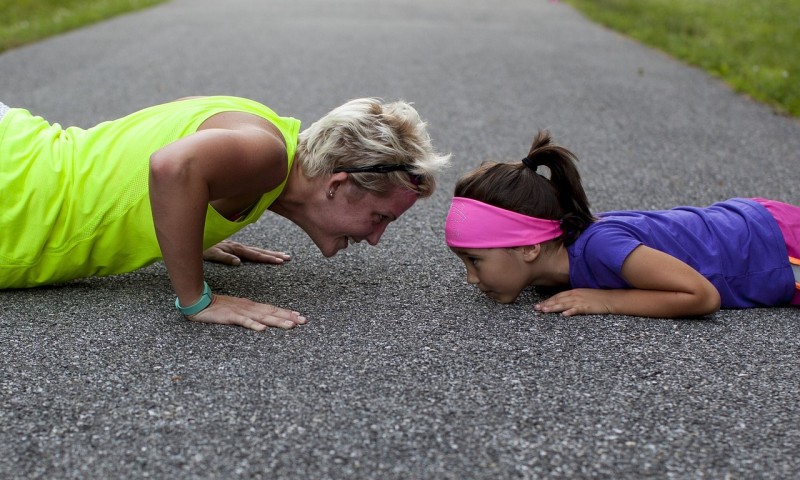With excessive equipment available in gyms, it can be overwhelming to decide which works best for you. But wait – there is good news! Your body can take the place of most exercise machines. Body weight training can be an easy and inexpensive mode of resistance training. These exercises can be performed anywhere and can be modified to meet your current level of physical fitness, strength and health.
How Can I Benefit from Body Weight Training?
There are plenty of ways that your weight and overall health can benefit from using your body to resistance train:
- Increase in Resting Metabolic Rate – Resting metabolic rate (RMR) refers to how many calories your body burns daily at rest. RMR consists of the size of your organs and other tissues, with muscle mass being the most significant tissue for metabolic rate. Since organ size is genetic, the only way to increase your metabolic rate is to increase the amount of muscle mass you have. The only way to increase the amount of muscle mass you have is to resistance train!
- It’s Cheap and Convenient – Fancy equipment isn’t needed to increase muscle mass or your health. Resistance training at its simplest form is applying force to cause a muscular contraction to specific muscle groups. You can accomplish these goals through body weight training; it is a cheap and effective way to resistance train.
- Increased Muscular Efficiency – The first step in any exercise is to consciously direct your focus to the muscle group you are trying to work, while working it. This is the muscle-to-mind connection or neuromuscular connection. For proper muscular activation, the muscle fibers you are working must receive a signal from your brain. A delayed signal from the brain to the muscle can result in decreased activation of the muscle. In turn, this decreased signal increases the risk of injury due to improper muscular activation. It is important to establish neuromuscular connection before increasing weight in any exercise.
A Few Exercises to Get You Started:
Disclaimer: Consult your physician or other health professional before beginning an exercise routine.
Squats
Despite physical issues, if performed correctly, you can still perform body weight squats. Let’s begin with proper form. Everyone has a different structural alignment; therefore, your squat stance might look different than your friend’s. Stand with your feet approximately shoulder-width apart. Place your toes in whichever direction feels comfortable on your knees and hips. If you naturally stand with your toes pointed outwards, chances are this stance will be comfortable for your squat.
Once you have your stance, start by pushing your hips outwards while lowering your body and maintaining your torso upright. Your knees should never push past your toes. Keep your toes up in your shoes and place your body weight into your heels. To come up from the squat, push your weight into your heels and use your glutes to extend your legs fully and take the pressure off your knees. This is the key!
Tricep Dips
A popular exercise for the triceps is the tricep dip. If this exercise is not performed properly, you can injure your shoulder by training into muscular imbalances which lead to joint pain. The main goal of the tricep dip is to keep your shoulder blades pushed together throughout the exercise. By keeping your shoulder blades together, you are not only working your triceps, but also training your low traps.
Begin with a bench or chair. Place your palms on the surface beside your hips. Your feet should stay flat on the ground and your knees at a 90-degree angle. Stay close to the bench or chair and lower your body, slowly keeping your shoulders back and elbows slightly in toward your torso. Lift your body slowly by pushing through your palms. Repeat. If you experience any joint discomfort, minimize the movement. Chances are you’re going too deep.
Wrapping it up:
Body weight training allows you to make a deeper muscle-to-mind connection. An increased muscle-to-mind connection decreases the risk of injury and increases the amount of work applied to specific muscle groups. Enjoy a better way to resistance train by using the perfect piece of equipment — your body!
About the Author:
 Jacy Mullins, M.S.Ed., NASM-FNS, earned her Master’s in Exercise Physiology from the University of Mary Hardin-Baylor in Texas. She is an Exercise Physiologist and Health Fitness Professional with a fitness nutrition certification. Jacy works with all populations, specializing in helping others strive to increase their overall wellbeing through lifestyle modifications. Most notably, Jacy has been published in well-known educational journals for her contribution to exercise testing and supplementation research studies. Her passion for overall wellness is driven by her own fitness journey and love for nutrition. For more information on the author, visit www.fitnessbeyondtraining.com.
Jacy Mullins, M.S.Ed., NASM-FNS, earned her Master’s in Exercise Physiology from the University of Mary Hardin-Baylor in Texas. She is an Exercise Physiologist and Health Fitness Professional with a fitness nutrition certification. Jacy works with all populations, specializing in helping others strive to increase their overall wellbeing through lifestyle modifications. Most notably, Jacy has been published in well-known educational journals for her contribution to exercise testing and supplementation research studies. Her passion for overall wellness is driven by her own fitness journey and love for nutrition. For more information on the author, visit www.fitnessbeyondtraining.com.






